Review - Castle Creations - Barracuda 80 Brushless Sensorless Controller
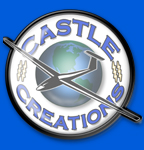
The Barracuda-80 is a fully proportional reversible, sensorless, three phase brushless motor, competition speed controller, waterproofed and designed specifically with serious fast model boats in mind. Shawn Palmer, Marketing / Support Director at Castle Creations has very kindly provided a unit for me to review.

The specifications of the Barracuda 80 controller are designed for fast boat applications with a very impressively low 0.0011 Ohm and high 80 Amp (120 Amp peak) rating and because of it's fully proportional reverse capability it really is in a class of it's own. Many controllers are designed exclusively or primarily for planes so they just don't have or want reverse and therefore aren't all that suitable for boats, this one is specifically designed for fast competition grade boats.
With almost any sensorless, brushless motor controller it is possible to swap any two of the three motor 'phase' wires and make the motor spin the other way so that you can correct for wrong rotation direction and unfortunately many manufacturers claim this ability as "reversible" but this isn't anywhere near the fully proportional reverse function of the Barracuda 80 that we need in a boat, so that we can make the motor go from forwards to stop and then to reverse smoothly and proportionally from the transmitter throttle control. Not only that but in the Barracuda we can also set the maximum reverse throttle power as a percentage of the forward power so that you can't accidentally swamp your boat going backwards too fast. It should be stated that this controller also has braking so it is not limited just to boats and could also be used in a seriously big model airplane.
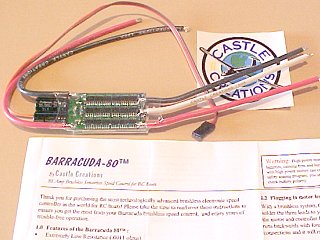
The first thing that strikes me about all speed controllers, and the Barracuda 80 is no exception, is the lack of connectors fitted or even supplied by controller manufacturers and while I can appreciate that the experts and motor manufacturers all prefer different types and brands of connector and that three pairs of bullet connectors are usually supplied with motors, it does make it somewhat difficult for the inexperienced novice with no soldering experience and also means that controllers cannot be used straight out of the box without possibly another unexpected trip to the hobby shop or another on-line purchase. Mating controller side bullet connectors are not always supplied with motors and you always have to supply your own battery connector.
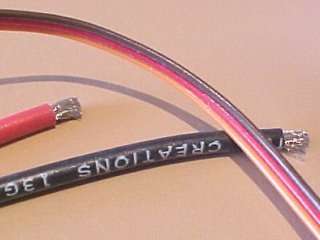
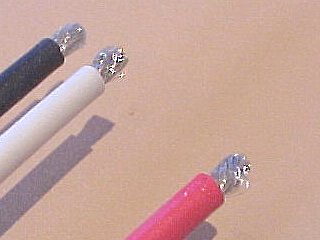
So the first task is to fit some good quality connectors to those big but flexible 13 Gauge wires and you may want to consider shortening them a bit if you don't need it all, as extra wire is extra milliOhms and at 80 Amps every milliOhm counts! If you can solder directly to the motor terminals this will also reduce the resistance by eliminating three connector pairs.
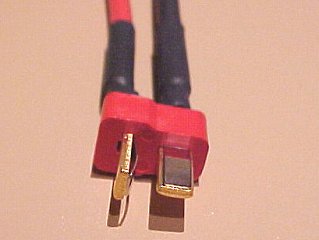
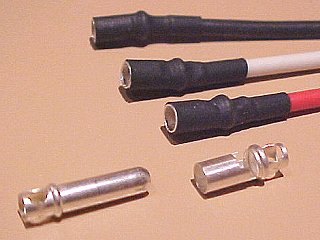
I have soldered a Deans Ultra male connector to the two battery leads and some fairly common silver plated 4mm bullet connectors to the three motor 'phase' wires, make sure these are all well soldered, preferably with 62/38 or 63/37 tin/lead uetectic solder and insulated with good quality heatshrink tubing and always make sure the battery polarity is correct, check it twice or even three times because you can only destroy it once!
The next task is to read the four pages of instructions at least once, (in the industry known as RTFM - Read The Flaming Manual) which covers fitting connectors (oops - done that already!) and calibrating the controller to your transmitter, which is fairly straightforward and does need to be done. Then the programmable features are covered in detail, with examples, so you can change or set things such as: (1) Brake Reverse type, (2) Reverse throttle amount - four settings, (3) Battery cutoff voltage - five settings to protect your different battery chemistry types by preventing over discharge, particularly relevant to Lithium cells, (4) Timing advance - four settings to set aggressive power or more runtime, (5) Starting power - three settings in case of difficulty starting particular motors.
So having read through once I checked the polarity again and then connected the controller up to the receiver, motor, and one of my smaller battery packs in the boat and fired it up.
The controller uses a bright red LED to show you what it is doing and it makes 'ring' and 'beep' noises using the motor as a speaker to let you know when to enter a 'yes' or 'no' answer by using the transmitter throttle control stick forward/reverse.
I had some difficulty with the interpretation of what I read in the instructions versus what I saw and heard from the controller, some of the waiting times between all the beeps and rings don't seem to be as long as stated and it all happened a bit quick for me and I totally screwed it up the first and second time and had to start over again once I'd got familiar with what I thought was which tone. The instructions describe a 'ring' which sounds more like an old fashioned Claxon car air horn going through a series of notes. Anyway I figured that out eventually and managed to set the reverse mode 'on' (the default setting is reverse 'off' and braking 'on', a safe mode I guess, so you don't crash a plane) and I also set the level of reverse throttle to 12.5%, everything else was fine as it was. If you don't want to change a particular setting you can just leave it as is or disconnect the controller if you only want to change the first couple of settings..
This was set up firstly with the boat on the bench (note from J.D.: please don't take brushless motors up to full speed with no load) and then in my small swimming pool, so once it was up and running and my biggest battery attached I had to hold the boat back while testing full reverse and full forward throttle, the reverse is good, quite mild and so may need to go up to 25% but it will do for now and the full forward thrust is very aggressive. I checked the temperature of the controller after a few seconds and then after nearly a minute of running, as I always do, and it was barely even working up a sweat, I always check the battery and motor temperatures as well, note that it's harder on the motor and controller when holding the boat back than when up and planing and running at speed.
I then tried a newly built 12 cell battery pack (14.4V
nominal) made up with new GP 3300 mAH NiMH cells, some of the best cells
available for high discharge current handling,
connected using Deans Probars (2.0) in the 4' long laser cut Hull-2 boat, just on the
center AXI 2820/10 brushless motor, direct driving a Raboesch 40mm 3 bladed
156-06 prop, again held back in the pool and tethered to a 50Kg digital fishing
scale and also using the Hyperion Emeter in the boat to monitor rpm, volts, and
amps and achieved 13,040 RPM at 4.3Kg (9.46 lbs) of thrust at a current of 42 Amps and
battery voltage of 13.47 Volts which is an impressive 565 Watts input to one motor. Imagine what it will do with three of
these running! that would be about 2.5 HP.
The theoretical top speed of this scale looking configuration, calculated from just the prop pitch
and without drag, slip or any other losses would be around 30 Kilometres per
hour or 16 Knots or 18 Miles per hour and the controller is only at half it's current
rating and running very cool, so the prospect of higher pitched props or more
cells is easily catered for.
One minor issue that I need to resolve before I can do some lake testing is that I had a grand plan in mind of calibrating the neutral throttle position to around 25% of the transmitter throttle stick travel, so that I could then use this controller in the PT Boat with a couple of other controllers that I already have that don't have reverse, these two controllers start running forwards at around 25% of throttle stick travel and I thought I could then have those at the bottom end of the throttle travel with their motors stopped and the Barracuda just heading into reverse but as it turned out I had no choice but to set neutral to the 50% stick mid point on the Barracuda or the calibration process wouldn't accept the setting. So even though we have only 12.5% set as a maximum reverse throttle it still takes up 50% of the transmitter throttle stick travel, it would be 'nice' to be able to move the neutral position down a bit to give us more stick travel for forwards and less for reverse, so in the meantime I'll have to think of another plan.
Lets have a closer look at this impressive little beast, clear heatshrink so no need to take it off!
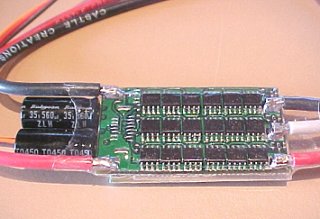
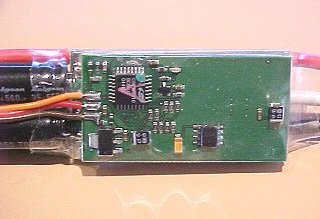
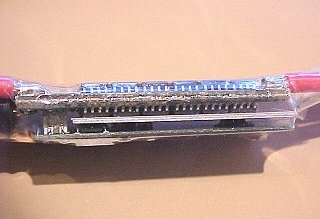
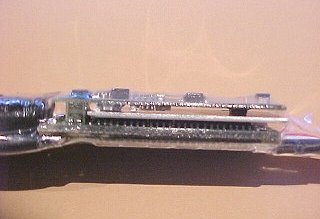
There are two circuit boards in the controller separated by an aluminium heatsink, the main processor is an C8051 derivative, so plenty of processing power available, and a whopping array of 36 MOSFets, so it's no wonder they get down to 1.1 milliOhms, that's a lot of Fets in parallel in each motor arm and also gives us a good idea of why this is a fairly expensive controller. It also boasts a 3A Battery Eliminator Circuit (BEC) which is more than enough to power torpedo launching racks and moveable weapons. The BEC usage is limited to 12 NiCD or NiMH cells or 3 Li-Po's though but if a separate receiver battery is used and the BEC is disconnected the maximum cell count goes up to 20 NiCD/NiMH (24VDC) or 6 Lithium (22.2VDC). According to the specifications the entire controller has been waterproofed with a silicon coating including the connector that joins the two circuit boards together so an accidental splash shouldn't be a major issue but I would still take extra precautions to keep it dry.
In summary this is a very well built, impressive and very potent competition grade controller with huge current handling that is not much bigger or heavier than controllers with less than half it's capability, it is complete with fully proportional and also tameable reverse as well as all the other mandatory features such as adjustable cutoff voltages to protect expensive batteries and I would highly recommend it as a most suitable controller for a very potent speed demon.
On the very slightly negative side I do think that the instructions need to be amended slightly for clarity in the word 'ring' and I personally would like to see the calibration and programmable function setting software menu's slowed down a bit for us terminally confused and it would also be 'nice' to see the neutral set position somewhat variable but these are only very minor issues and I will feed these opinions back to Castle Creations, but overall I am very impressed......and I do believe there is now a 125Amp version available at 0.0008 Ohms!!
The Specification - copied from the Castle Creations Website: http://www.castlecreations.com
(I believe this specification should read: Reversible - Yes -Fully Proportional)

|
Hydra-240
Sensorless Brushless Motor Water Cooled Control - Wow these Castle Creations controllers just keep getting better and better. They also have a great range of motors up to many thousands of watts. |
|||||||||||||||||||||||||||||||
|
The
Barracuda-80 is the ultimate high power sensorless control with a whopping
120-amp surge rating! Completely waterproofed with pistol radio
throttle control it's the ultimate hop-up for competition racers.
Ask US national champion Dick Crowe. Dick won the 2003 N2
Hydro and
O Mono categories with his Barracuda-80 controller.
Despite its
high current capability the Barracuda-80 is still a compact, lightweight
alternative to other controls on the market. At a mere 2.1 ounces
(60g) with full length wires, the controller is packed with features!
It comes with the full range of Barracuda programming options including
adjustable switching rate, programmable brake and several timing modes for
the ultimate in competition controllers. See the Barracuda-80 User Guide (PDF) for more details.
|
|||||||||||||||||||||||||||||||
Thanks for the opportunity to try this controller Shawn.